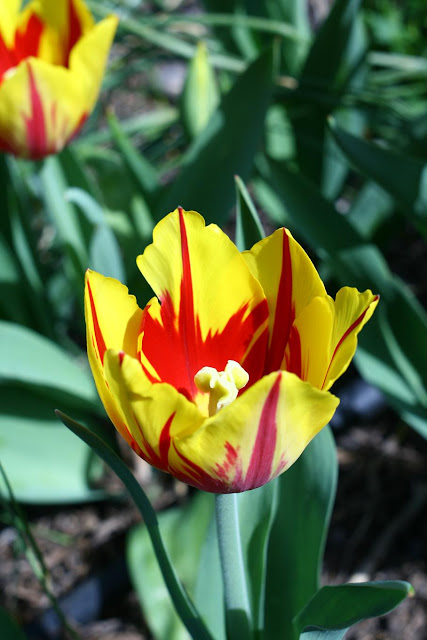We travelled down to Cambridge on Thursday, paused to pick up a copy of St John's College Cambridge: A History, which is being given to Johnians ahead of its release (a magnificent tome coinciding with the quincentenary). We spent the rest of the day with the Fellow we stayed with, Katherine, who has rooms in Pembroke.
Friday was spent profitably, mooching round Cambridge, and watching some coverage of events in London. It was a lovely day for sitting on the Backs admiring St John's New Court (apologies for the wonky horizon).
We also went back round Clare College's gardens. It was interesting to see them just a few weeks after our last visit. The hyacinths have all gone over, but there are loads more tulips out, and their bed of hostas looks great.
We came home on Saturday, stopping off to visit an old neighbour, who very graciously gave us a peony ('Sarah Bernhardt'), and also called in at our old local garden centre, leaving with some bits and pieces, including a second calathea for the sitting room.
We return to work on Tuesday, which gives us a couple of days to get the vegetable beds in order: we want to plant out lots of the seedlings, and the bottom rectangular bed (now it's empty) needs its fleece cage and irrigation installing, and to be filled with topsoil. We added manure in March, when doing the other beds, leaving it piled at one end: that will need distributing across the whole area. It may make for a couple of long days!









